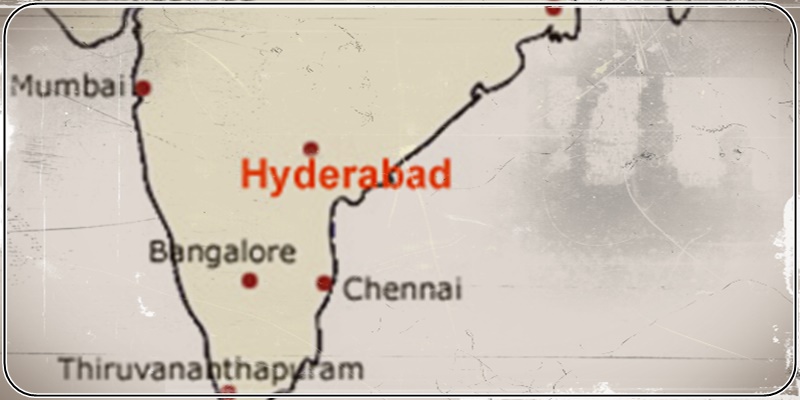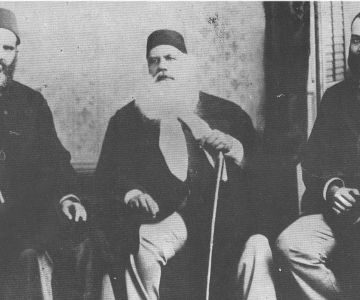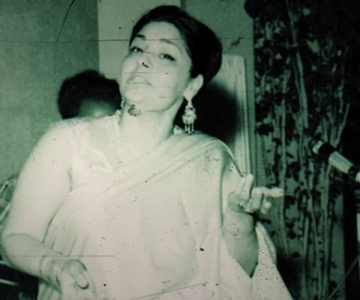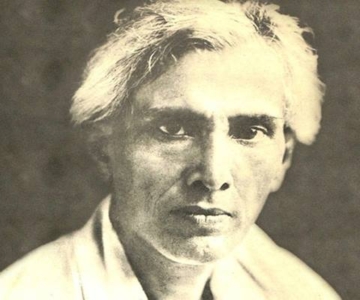The Untold Charminar -Reviewed By Asif Noorani
Way back in 1954 when I greeted a grand old lady, who had migrated to Karachi from what used to be Hyderabad Deccan, with the customary Assalam Alaikum, I was admonished for my `bad manners`. She reminded me that I was not her age, which was why I was supposed to say Aadab and bend my neck slightly.
That was the Hyderabadi tehzeeb (a combination of good manners and courtesies). A recently published collection of writings Hyderabad An Untold Charminar, imaginatively compiled and intelligently edite by Syeda Imam, has much more to say on the subject. The old-worldly charm in Hyderabad co-exists with the great strides that the city has taken in becoming a high profile IT city, which is why it has been nicknamed Cyberabad.
It`s a city that attracts technocrats from all over India, but then that`s nothing new for in the glorious days of the Nizam, Men of letters and those who could boast of accomplishments in other cultural fields were attracted by the monarch, who enjoyed more power and riches than any other head of a princely state in British India.
Those who settled down in Hyderabad were amply rewarded in terms of respect and material gains alike. Not all of them returned to their native cities. Nowhere is this more evident than in the case of Urdu poets. Dagh, Fani, Ameer Minai and Josh which are just four names that come to this reviewer`s mind.
Hyderabad`s Osmania University had a well equipped, in terms of men and material, bureau of translation and compilation, which coined suitable scientific and socio-political terms in Urdu. It was also, until the birth of Pakistan, the only university to have Urdu as a medium of instruction even up to post-graduation level, which was not to mean that Telegu, the language of the majority outside the twin cities of Hyderabad and Secunderabad was neglected.
In fact Dakhani, the local dialect of Urdu, was a mixture of Marathi, Telegu and Arabic. So, when a Hyderabadi speaks the language in a typical sing-song manner the Urdu speakers from the north can be sure that they will hear some unfamiliar words.
The volume under review informs its readers that Quli Qutub Shah, the founder of Hyderabad, composed 50,000 lines in Telegu, Dakhini and Urdu (`when the language had not even acquired the name`). That was sometime near the end of the 16th century and in the beginning of the 17th.
Hyderabadi cuisine, as discussed in much detail by Zuju Shareef, titillates the taste buds of Hyderabadis and non-Hyderabadis alike. Hyderabad Colony in Karachi, particularly during Ramazan, shows a glimpse of the culinary variety that is the hallmark of what was once the largest princely state in the subcontinent, until it was invaded by the Indian army on September 12, 1948 and not September 13, as Shyam Benegal writes in his otherwise fine piece.
The diversity in Hyderabad of cultures, cuisine, languages and religions was rare and continues to be so. It is in this context that you enjoy reading the write-up on the Parsis by Yezdyar S. Kaosji about this miniscule community.
Benegal also wrongly states the day Mr Jinnah passed away — instead of 11th, he writes 13th. In fact the Indians chose to catch the Hyderabadis unaware, which was why they sent their army a day after the Muslim leader died.
But then not everyone would sympathise with the Nizams for they had ganged up with the colonial power against the freedom fighters Hyder Ali and Tipu Sultan. They were more than amply rewarded by the East India Company for what would seem to most of us an act of treachery.
Though only 0.08 per cent (1224 in absolute terms), the Parsis have left indelible marks in different fields.
In another riveting piece, Javeed Alam makes two observations, the vanishing of cycle rickshaws, which have been largely replaced by motorised three-wheelers, and the greater numbers of burqas that one gets to see in the city which has something like one-third Muslims. The writer says quite convincingly that it is indicative of the fact that more and more Muslim women are now leaving the confines of their homes. `20 years ago not many lower-middle-class Muslim women were educated or employed. They rarely stepped out of their homes or beyond the circles of relatives… What we see as the increase in the visibility of the burqa are these women out in the public sphere, educating themselves and working in sectors of the economy which were completely hidden from their view two decades ago,` claims Alam.
Ismat Mehdi profiles some great people who have played important roles in the development of Hyderabad, starting from its founder Quli Qutub Shah to the Nightingale of the East, Sarojini Naidu. The write-up tells us as much about these eminent people as it throws light on the state in their periods.
An excerpt — Mian Captain Banoge — from Harsha Bhogle`s book on the son of the Hyderabadi soil, the great Test cricketer Azharuddin shows some endearing traits of the man who played 99 Tests for his country. The most notable being his modesty.
Anees Jung, on the other hand, writes about a Hyderabadi whose popularity was restricted to the city and whose pickles were the rage of the day. She almost chronicles his life and shows how people-to-people contact cuts across religious boundaries. An eminent Hyderabadi poet Shaz Tamkanat had composed a few lines on the plight of Ramlu when he became blind and deaf. These are included in Jung`s piece.
While on poems, the volume carries translations of the best known Urdu poet from Hyderabad, Makhdoom Mohiuddin and also some scintillating verses of Sarojini Naidu, whose letters have also been reproduced.
Syeda Imam also includes a translation of a Wajda Tabassum`s early short story Utran. Sadly, the Hyderabadi writer did not live up to her earlier promise. In her attempt to be bold like Ismat Chughtai, she ended up writing stories which sometimes bordered on soft core pornography. Jeelani Bano would have been a better choice.
Syed Sirajuddin in his excellent piece, For Better and for Verse, discusses the development of Urdu in Hyderabad and quotes profusely from eminent and not so well known poets. One person we Pakistanis don`t seem to know hardly anything about is Maharaja Kishen Pershad. He was `many things in the Hyderabadi literary world, a patron and practitioner, who represented the confluence of Muslim and Hindu, aristocrat and dervish… A prolific writer, he produced some 60 books and held court in a literary salon where even the great poet Iqbal came…`
Due to constraints of space, one cannot comment on all the pieces that appear in the volume, but Omkar Goswami`s narration about the recent changes occurring in Hyderabad, thanks largely to the untiring efforts of Chandrababu Naidu, makes compulsory reading.
How the man attracted foreign investment, got grants from New Delhi, forced people to work hard and made the city shed its grime is worth knowing about. Hyderabad is now more prosperous than it was before Naidu appeared on the scene. The city is `inundated with shopping malls` and thanks to its people`s prosperity the plazas are choc a bloc with buyers.
It`s heartening to see that Hyderabad is once again in the limelight.
The Untold Charminar
By Syeda Imam
Penguin books, India
Available with Paramount Books, Karachi
ISBN 978-0-143-10370-7
335pp. Rs798



